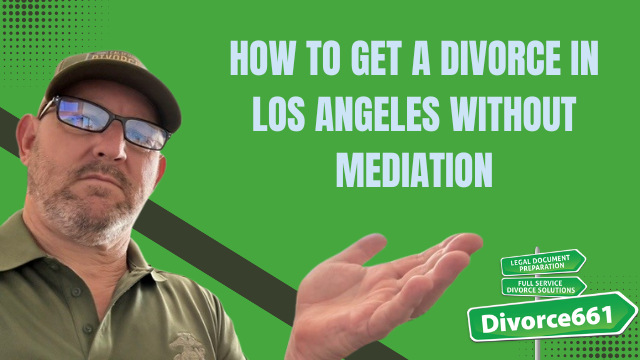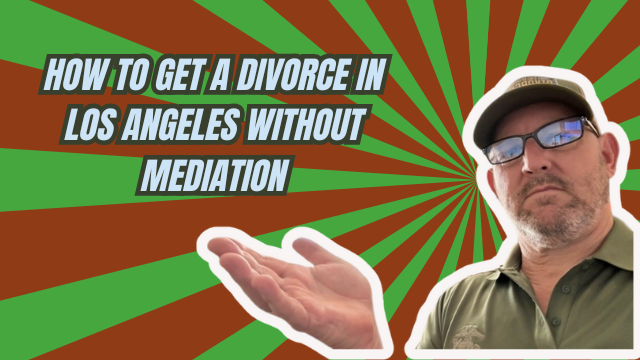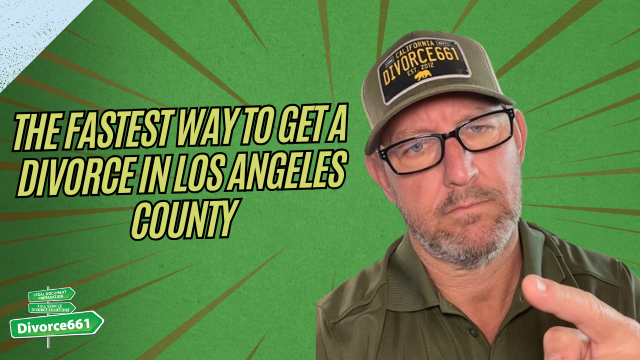How to Get a Divorce in Los Angeles Without Mediation
Hi, I’m Tim Blankenship from Divorce661. If you and your spouse are already on the same page about dividing assets, custody, and support, you do not have to go through mediation in Los Angeles County. In this article I’ll explain what mediation is, why it’s optional for most uncontested divorces in California, and exactly how you can complete your divorce legally, quickly, and affordably without mediation.
What is mediation — and when is it useful?
Mediation is a process where a neutral third party helps spouses negotiate unresolved issues like property division, child custody, and support. It’s extremely valuable when couples are having trouble reaching agreement or need a facilitator to keep negotiations productive.
But if you and your spouse have already had the important conversations and agree on the terms of your separation, mediation is optional. For most uncontested divorces in California, you can skip mediation and finalize the divorce by submitting the required paperwork to the court.
How you can skip mediation in Los Angeles County (step-by-step)
If both parties are in agreement, here’s the typical path to avoid mediation and finalize your divorce without court appearances:
- Agree on the terms. Make sure you and your spouse have reached a clear, written agreement on property division, debts, spousal support (if applicable), and custody/visitation and support for any children.
- Prepare a full Marital Settlement Agreement. This document captures all of your agreements in legal language that the court can adopt.
- Complete required court forms and disclosures. California requires certain financial disclosures and court forms to be filed with the divorce packet. These must be accurate and complete.
- Assemble a judgment package. Combine the settlement agreement, the judgment, and all supporting forms into a complete filing package the court will accept.
- E-file and submit. In Los Angeles County, everything can be handled remotely through e-filing. If the paperwork is complete and both parties signed where necessary, you can avoid in-person hearings.
- Wait for the court to enter the judgment. Once the court reviews and signs the judgment, the divorce is final as of the date the court enters it.
What we handled for a recent client
We worked with a couple who had been married 12 years, had no minor children, and were already in agreement about asset division. They saw mediation listed in the court’s online process and assumed it was mandatory. After we reviewed their situation, they confirmed they wanted a straightforward, uncontested process. We prepared and filed all their documents, took care of disclosures, and submitted their judgment — all completed in under six weeks.
“Mediation is not required, especially if your case is amicable and you already agree on the terms of your divorce.”
Why choose a flat-fee, remote service like Divorce661?
- Skip mediation, court appearances, and expensive hourly lawyers when both parties are in agreement.
- Flat-fee pricing so there are no hourly billing surprises.
- 100% remote process — documents are prepared, reviewed, and e-filed electronically.
- Accurate, court-approved documents submitted the first time to avoid delays and rejections.
Common concerns and quick answers
Do we still need to file financial disclosures?
Yes. Even in uncontested cases, California requires disclosure of financial information to ensure agreements are informed and fair.
Will the court ever force mediation?
Not typically for uncontested matters where both parties submit a full settlement agreement and judgment package. Courts encourage settlement, but if a judge sees unresolved issues or incomplete paperwork they may request additional steps.
Can we do this without attorneys?
Yes. If you and your spouse are amicable and able to document your agreements clearly, you can complete the divorce without attorneys. That’s the service we provide: we draft the legal paperwork correctly so you don’t have to hire separate attorneys.
Next steps
If you and your spouse agree on the terms of your divorce and want to avoid mediation, court, and unnecessary costs, schedule a free consultation at Divorce661.com. We’ll walk you through the required documents, handle the disclosures, and submit everything properly so your divorce can be finalized as efficiently as possible.
If your case is uncontested and you know what you want, you don’t have to let mediation or courtroom procedures slow you down. Reach out and we’ll help you finish the process right — without mediation.










